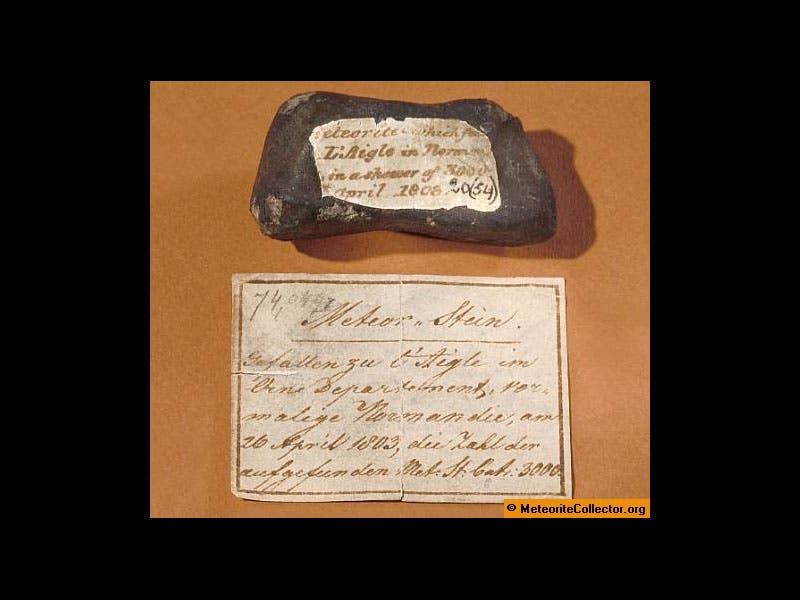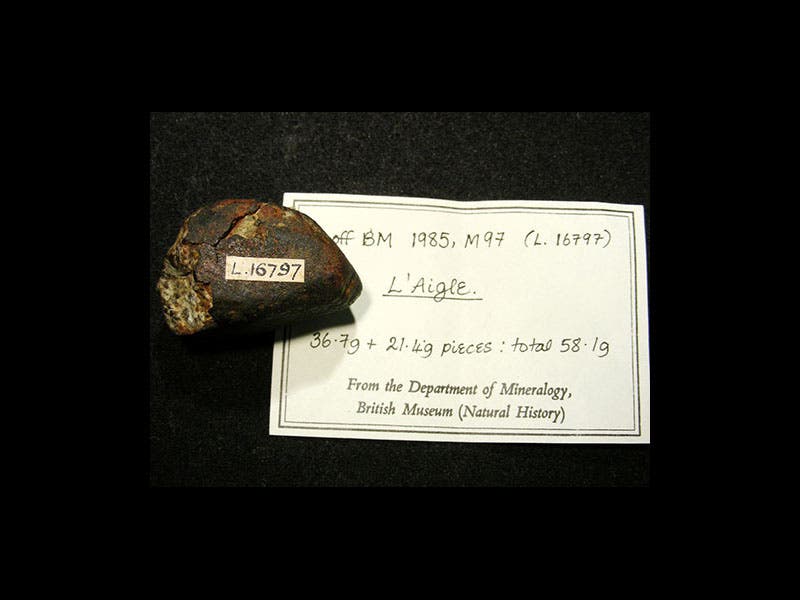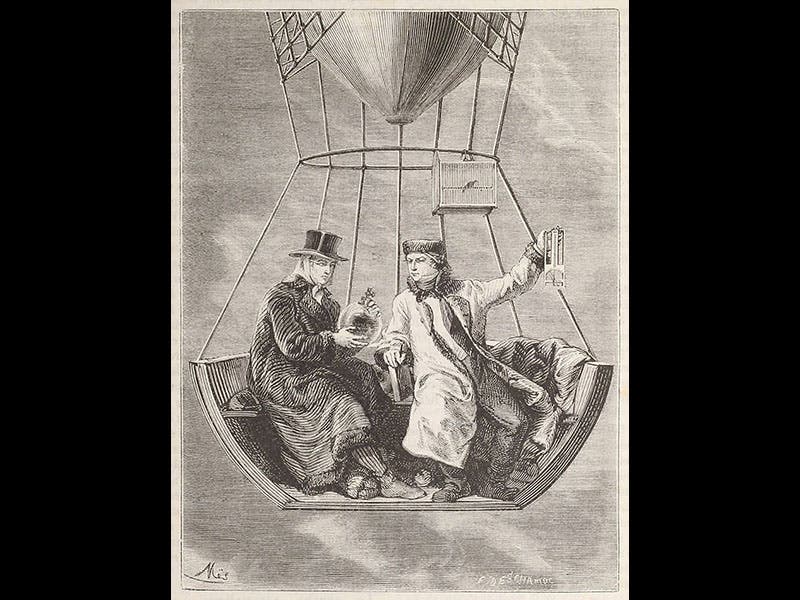Scientist of the Day - Jean-Baptiste Biot

Jean-Baptiste Biot, a French physicist and astronomer, was born Apr. 21, 1774. In Biot's day, the extraterrestrial origin of meteorites was a hotly-debated topic. Ernst Chladni in 1794 had first proposed the idea that meteorites come from outer space, but many preferred to believe that meteorites were either the explosive products of volcanic eruptions, or concretions that formed in the atmosphere, like hail. On Apr. 26, 1803, reports came out of a small French town called L'Aigle that a rain of stones had fallen from the sky. We see above photographs of two of the 3000-odd meteorites that were collected that day (first and second images).
Biot was sent to investigate. Not only did he interview dozens of townspeople, but he studied the chemistry of the fallen stones and then scoured the area, including factories, to see if he could find any kinds of stones or manufacturing products that resembled the meteorites. He could not. Biot returned to Paris and wrote a report in which he ruled out every other possible origin for meteorites except an extraterrestrial one. Modern meteoritics really began with this report. And the reason Biot was convincing is that he produced eye-witnesses and showed that their testimony was reliable. Biot's scientific stock rose dramatically, especially when the very next year he ascended in a balloon with the chemist Gay-Lussac to an altitude of over 4 miles, attempting to see outer space for himself. In the wood engraving above, from a 19th-century book in our collections, Biot is the one on the right (third image).
Dr. William B. Ashworth, Jr., Consultant for the History of Science, Linda Hall Library and Associate Professor, Department of History, University of Missouri-Kansas City. Comments or corrections are welcome; please direct to ashworthw@umkc.edu.








